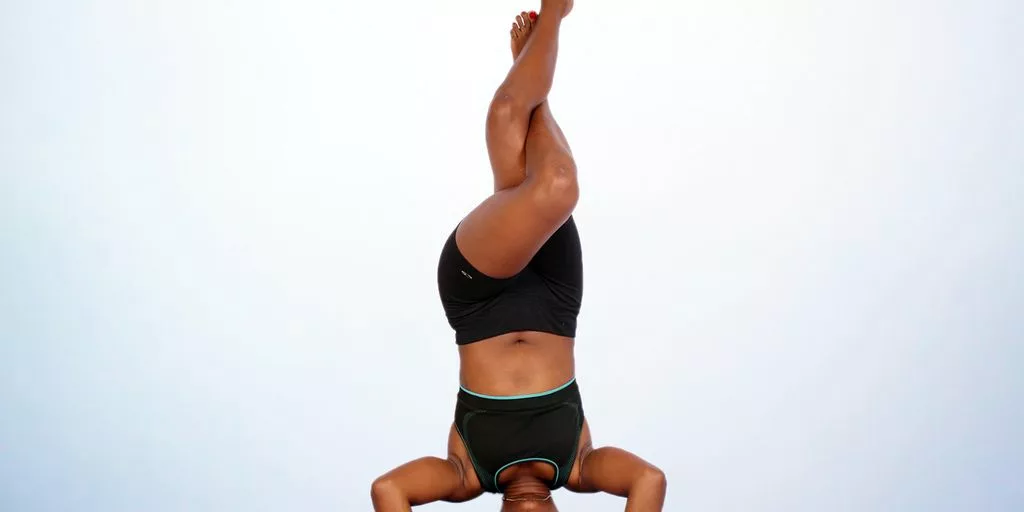
Yoga is a holistic practice that offers numerous physical, mental, and emotional benefits. For beginners, starting a yoga practice can be both exciting and overwhelming. This guide aims to simplify your journey by introducing essential poses, creating a home practice, understanding breathwork, and offering tips for consistency and avoiding common mistakes. Let’s embark on this journey to wellness together!
Key Takeaways
- Start with foundational poses like Mountain Pose, Downward Facing Dog, and Child’s Pose to build strength and flexibility.
- Create a dedicated space and choose a consistent time for your home yoga practice to cultivate discipline.
- Incorporate breathwork techniques such as Pranayama to enhance your practice and overall well-being.
- Set realistic goals and track your progress to stay motivated and consistent with your yoga practice.
- Avoid common mistakes like pushing too hard, ignoring breathwork, and skipping warm-ups to prevent injuries.
Essential Yoga Poses for Beginners

Starting your yoga journey can be both exciting and overwhelming, especially with the myriad of poses and their unique names. Relax and take it slow; here are some foundational poses to get you started on the right foot.
Creating a Home Yoga Practice
Creating a serene and dedicated space for your yoga practice is essential. Choose a quiet corner in your home where you can lay out your mat and have enough room to move freely. Ensure the area is free from distractions and clutter. Adding elements like candles, soft lighting, or calming music can enhance the ambiance and make your practice more enjoyable.
Finding the right time to practice yoga can significantly impact your consistency. Early mornings are often recommended as they set a positive tone for the day. However, the best time is when you can consistently dedicate time to your practice. Whether it’s in the morning, afternoon, or evening, make sure it fits seamlessly into your daily routine.
In today’s digital age, there are countless online resources available to help you start and maintain a home yoga practice. From video tutorials to virtual classes, you can find a variety of options that suit your level and preferences. Explore different yoga traditions and find what resonates with you. Many platforms offer free trials, so you can experiment before committing to a subscription.
Starting a home yoga practice can be a transformative journey. With the right setup, timing, and resources, you’ll be well on your way to embracing your inner peace.
Breathwork Basics for New Yogis
Understanding Pranayama
Pranayama, or breath control, is a fundamental aspect of yoga that involves various techniques to regulate and deepen your breathing. Full yogic breath is a deeply balancing pranayama that benefits all doshas: vata, pitta, and kapha. It is sometimes known as three-part breath and can be incredibly grounding and calming.
Simple Breathing Exercises
At the beginning of a yoga class, a teacher may guide students through one or more breathing techniques, including Ujjayi, as well as:
- Alternate Nostril Breathing (Nadi Shodhana)
- Cooling Breath (Shitali Pranayama)
- Breath of Fire (Kapalabhati Pranayama)
It’s normal to feel awkward when you first start practicing yogic breathwork. Be patient with yourself, and over time, you may become more comfortable and reap the benefits.
Incorporating Breath into Poses
A well-known saying goes, “Movement with awareness is yoga. Movement without awareness is exercise.” This awareness includes attention to your breath as you move throughout the poses. By incorporating breath into your practice, you can enhance your focus, reduce stress, and improve overall well-being.
Remember, the key to mastering breathwork is consistency and patience. Over time, these techniques can transform your yoga practice and your life.
Tips for Staying Consistent with Your Practice
Starting a yoga practice is a journey of self-discovery and growth. Consistency is key to progress and reaping the benefits of yoga. Here are some tips to help you stay on track:
- Set realistic goals to keep yourself motivated and focused.
- Track your progress to see how far you’ve come and celebrate your achievements.
- Find a yoga community for support, inspiration, and connection.
Remember, yoga is a personal practice, and each step you take brings you closer to a healthier and more balanced lifestyle. Embrace the journey and enjoy the transformation.
Common Mistakes Beginners Should Avoid

Starting a yoga practice can be an exciting journey, but it’s important to be aware of some common pitfalls that many beginners encounter. Avoiding these mistakes can help you build a sustainable and enjoyable practice.
Pushing Too Hard
One of the most frequent mistakes is pushing yourself too hard. It’s easy to get caught up in the excitement and try to match the person on the next mat, but this can lead to injury. Remember, yoga is about finding balance and self-discovery, not competition. Start with basic poses and gradually move to more challenging ones as your strength and flexibility improve.
Ignoring Breathwork
Breathwork, or pranayama, is a fundamental aspect of yoga that should not be overlooked. Many beginners focus solely on the physical postures and ignore the importance of breath. Proper breathing can enhance your practice by increasing oxygen flow and helping you maintain focus. Make it a point to incorporate breathwork into your routine from the beginning.
Skipping Warm-Ups
Skipping warm-ups is another common mistake. Warm-ups prepare your body for the more intense stretches and poses, reducing the risk of injury. A good warm-up can include simple stretches and light movements to get your blood flowing. Always take a few minutes to warm up before diving into your main practice.
The more you practice yoga, the more you’re building awareness in your body. Starting with easy poses and gradually moving to more challenging ones can help you stay consistent and avoid injuries.
The Benefits of Starting Yoga

Starting a yoga practice can be a transformative experience, offering a multitude of benefits that span the physical, mental, and emotional realms. Whether you’re looking to improve your physical fitness or seeking a way to manage stress, yoga has something to offer everyone.
Exploring Different Styles of Yoga

Hatha Yoga
Hatha Yoga is a gentle introduction to the most basic yoga postures. It focuses on individual poses rather than the flow between them, making it ideal for beginners. This style helps deepen your understanding of each pose and is perfect for those looking to increase their awareness of their body and mind.
Vinyasa Yoga
Vinyasa Yoga is characterized by its fluid, dance-like movements. Each pose transitions smoothly into the next, synchronized with your breath. This style is more dynamic and can be a great cardiovascular workout. It’s excellent for those who enjoy a more vigorous practice.
Restorative Yoga
Restorative Yoga is all about relaxation and rejuvenation. It uses props like blankets and blocks to support your body in various poses, allowing you to hold them for longer periods without strain. This style is perfect for stress relief and achieving a state of deep relaxation.
Exploring different styles of yoga can help you find the practice that best suits your needs and lifestyle. Whether you’re looking for a vigorous workout or a way to unwind, there’s a yoga style for you.
Conclusion
Embarking on a yoga journey as a beginner can be both exciting and rewarding. With foundational poses like Mountain Pose (Tadasana) and Cat-Cow Pose (Marjariasana), you can start building strength, flexibility, and confidence. Remember, yoga is not just about the physical postures but also about connecting mind, body, and spirit. Whether you choose to practice at home or join a class, the key is consistency and patience. So, roll out your yoga mat, take a deep breath, and enjoy the process of discovering the many benefits that yoga has to offer.






